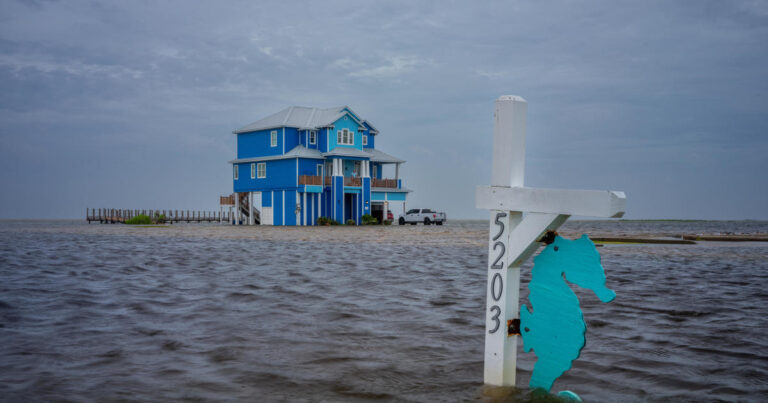Tropical Storm Alberto Heavy rains fell near northeastern Mexico early Thursday, killing at least three people but bringing hope to a region suffering from a long and severe drought. The first named storm This season.
Alberto is expected to reach the Gulf Coast soon, then weaken quickly over land and dissipate later in the day or Thursday night, according to the National Hurricane Center in Miami.
Rain from Alberto fell on both sides of the border, extending across much of the South Texas coast and south into the Mexican state of Veracruz. Rainfall and wind gusts are beginning to ease off the Texas coast, but are expected to continue into the morning in northeastern Mexico, according to the hurricane center.
As of 5 a.m. EDT, the center of Alberto was about 40 miles east of Tampico, Mexico and 250 miles south of Brownsville, Texas, and was moving west with maximum sustained winds of 50 mph.
Rainfall from Alberto is expected to begin to taper across South Texas during the day, with rainfall amounts expected to be less than an inch, but “one or two tornadoes are possible across parts of South Texas,” the center said.
Heavy rain is expected to continue into the morning in northeastern Mexico, with another 5 to 10 inches of rain expected. Up to about 20 inches of rain is expected in the highlands of the Mexican states of Coahuila, Nuevo Leon and Tamaulipas.
“This will likely lead to large flash floods, urban flooding and new river overflows, as well as landslides in the highlands of northeastern Mexico,” the center added.
Mexican officials have downplayed the risk posed by Alberto, instead pinning hopes on its ability to ease water demand in drought-stricken areas.
“The (wind) speed is not high enough to be considered dangerous,” Tamaulipas state hydrological resources director Raul Quiroga Alvarez said at a press conference late Wednesday. Instead, he encouraged people to greet Alberto with joy. “This is what the whole state of Tamaulipas has (hoped) for eight years.”
Much of Mexico is in the grip of a severe drought, with northern Mexico hit particularly hard, Quiroga said, noting that the state’s reservoirs are low and that Mexico owes the United States a huge water debt under their shared use of the Rio Grande.
“This is a win-win for the state of Tamaulipas,” he said.
But in the neighboring state of Nuevo Leon, civil defense officials reported three deaths linked to Alberto’s rains: one man died in the La Silla River in the state capital of Monterrey, authorities said, and two minors were electrocuted in the city of Allende, where local media reported the minors had been riding their bikes in the rain.
Nuevo Leon state Governor Samuel Garcia wrote on his account on social media platform X that subway and public transport services would be suspended in Monterrey from Wednesday night until noon on Thursday as long as Alberto has a travel pass.
He said people in Mexico are hoping Alberto will bring rain.
Tampico resident Blanca Coronel Moral went to the city’s waterfront on Wednesday to wait for Alberto’s arrival.
“Thank goodness, we needed this water right now, let’s just pray that we get water,” Coronel Moral said. “The lagoon, our source of drinking water, has completely dried up.”
Authorities have closed schools in Tamaulipas state for the rest of the week due to the possibility of localized flooding.

